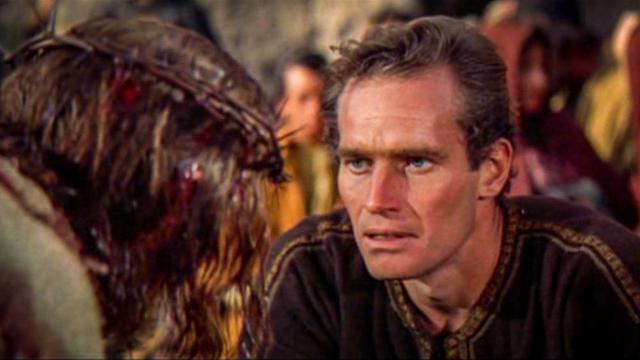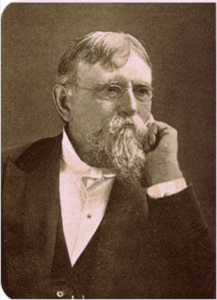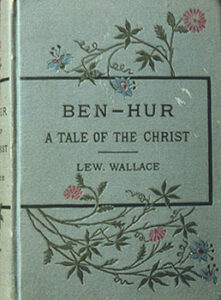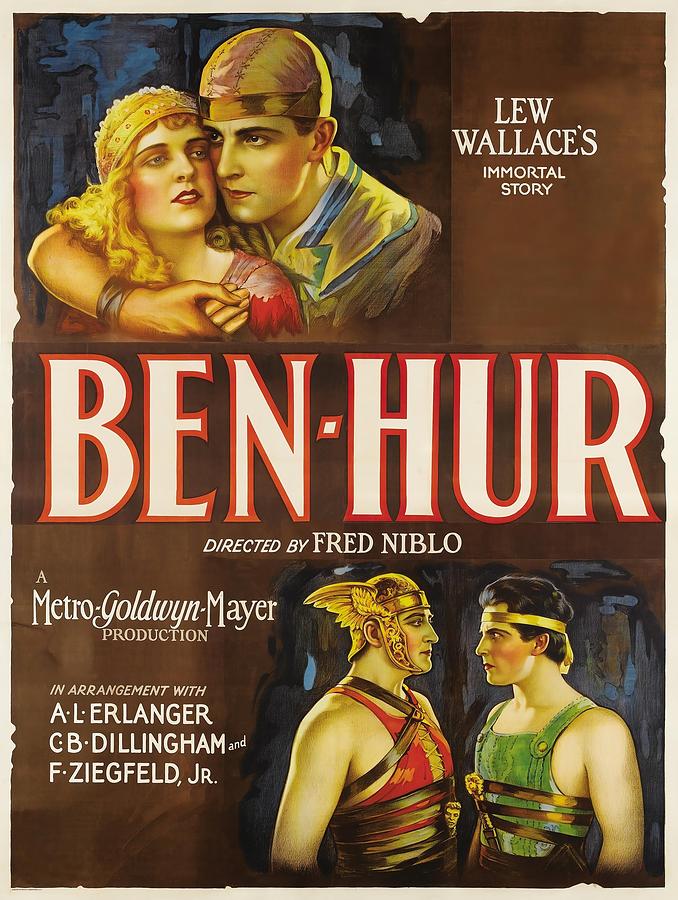 CRAWFORDSVILLE, Ind. – For many, watching the movie “Ben-Hur” has become an Easter tradition. The 1959 blockbuster, starring Charlton Heston, made history with a record 11 Academy Awards.
CRAWFORDSVILLE, Ind. – For many, watching the movie “Ben-Hur” has become an Easter tradition. The 1959 blockbuster, starring Charlton Heston, made history with a record 11 Academy Awards.
Now, the 1925 silent version is making a comeback. But what many may not know is that Hollywood didn’t create this classic story.
The idea came from the best-selling novel, Ben-Hur: A Tale of the Christ, published in 1880. The book tells the story of a life-altering encounter between a first-century Jewish prince and Jesus of Nazareth.
The author is Lew Wallace – a true renaissance man.
Without Real Conviction
“He tried different things,” said Larry Paarlberg, director of the Lew Wallace Study and Museum in Crawfordsville, Ind.

Gen. Lew Wallace
“He loved to paint, he loved to write, he loved to do creative things, he loved the military,” he explained. “He became a prosecuting attorney; he was in the legislature for a term.”
Wallace showed a talent for writing early in life. He learned about the Bible from his favorite teacher. And while he didn’t care for church, the story of the three wise men fascinated him.
As Wallace later wrote in his autobiography, “Little did I dream then what those few verses were to bring me — that out of them Ben-Hur was one day to be evoked.”
In the meantime, Wallace’s writing took a back seat to other priorities. He fought in the Mexican-American War and the Civil War, becoming the youngest major general in the Union Army. He also married and had a son.
Throughout the years, he kept coming back to the biblical account of the three wise men. So, he decided to write a magazine article about them.
“I had no convictions about God or Christ. I neither believed nor disbelieved in them Yet when the work was fairly begun, I found myself writing reverentially, with awe,” Wallace wrote.
His Own ‘Tale of Christ’
Still, Wallace had much to learn about God — as he found out in a chance encounter with a well-known atheist named Robert Ingersoll.
 “Robert Ingersoll knew far more about the Bible,” Paarlberg said.”You don’t preach against something unless you know it. And so he just filleted Lew.”
“Robert Ingersoll knew far more about the Bible,” Paarlberg said.”You don’t preach against something unless you know it. And so he just filleted Lew.”
Walking alone to his hotel that night, Wallace realized the time had come to form his own opinion on the subject of religion.
“My ignorance of it was painfully a spot of deeper darkness in the darkness,” he wrote. “I was ashamed of myself.”
Paarlberg sees this as a pivotal moment in Wallace’s life.
“He realized at that point, ‘I have no business submitting this story for publication. I don’t know what I was talking about I need to do the research; I need to learn the Bible; I need to learn the story,” he said.
Early in his research, Wallace created the fictional character of Judah Ben-Hur, a witness to the real-life events leading up to the death and resurrection of Christ.
Wallace soon began to see God through the eyes of his character.
“Long before I was through with my book, I became a believer in God and Christ,” the author wrote.
A Classic Masterpiece
The original manuscript of Ben-Hur: A Tale of the Christ is kept at The Lilly Library on the campus of Indiana University.
Curator of Manuscripts Cherry Dunham Williams gently lifted the tall stack of papers from the special box where it is stored to show CBN News. There are 650 pages, hand-written in purple ink.
When Wallace delivered his manuscript to Harper & Brothers in 1880, they had no idea it would make publishing history. The book became the best-selling novel of the 19th century and has been translated into more than 40 languages. It has never been out of print.
Paarlberg said Ben-Hur had a big impact on the post-Civil War country.
“It sort of was a touchpoint that people could understand and relate to. People were looking for ways to reconcile, to come together,” he explained. “They were exploring, ‘How can there be a God that would allow a war to happen like this?'”
Soon after its publication, letters began flooding in, including one from President James Garfield.
“With this beautiful and reverent book you have lightened the burden of my daily life,” Garfield wrote.
A Lasting Heritage
Wallace’s own burdens had always been lightened outdoors. He did most of his writing under what came to be known as the Wallace Beech Tree.
“Its spreading branches droop to the ground, weighed down by their wealth of foliage, and under them I am shut in as by the walls of a towering green tent,” he wrote of it in his autobiography.
The Wallace Beech is no longer there; it died shortly after Wallace did and was replaced by a bronze statue of the author.
What does remain from Wallace’s time is a building that he dreamed about for decades, but never had the resources to build — until the success of Ben-Hur.
Wallace designed an extraordinary 19th-century “man cave,” a free-standing building that holds books, paintings, and memorabilia from his life.
“Lew built this as his private retreat,” Paarlberg said.
Wallace spent his golden years in Crawfordsville, writing every day until his death in 1905.
His grave marker is inscribed with a quote from Ben-Hur, by one of his beloved wise men: “I would not give one hour of life as a Soul for a thousand years of life as a man.”
Author Unknown

